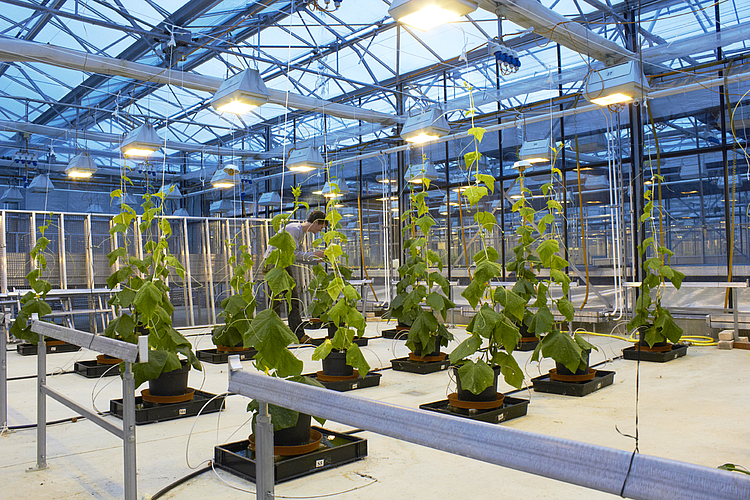GEZONDE KAS - Development of decision support systems (DSS) for greenhouse pest insects

| Leitung: | Dr. Rainer Meyhöfer |
| E-Mail: | boeckmann@ipp.uni-hannover.de |
| Team: | Dipl. Biol. Elias Böckmann |
| Jahr: | 2012 |
| Datum: | 23-05-12 |
| Förderung: | EU Interreg IV A |
| Laufzeit: | 2011-2014 |
| Bemerkungen: | Dr. R. Meyhöfer |
Greenhouse nurseries producing vegetables and ornamentals often have a lot of serious problems with pests. White flies, for example are the most important pest species in tomatoes and cucumber. Thrips causes serious damages on tomatoes, cut roses and cyclamen. Additionally aphids and spider mites cause problems in several different cultivated plants. Control of all pests is possible in a few cases by chemical products but primarily desirable and more sustainable by biological pest control. Therefore a lot of methods depending on the pest species are available. White fly (Trialeurodes vaporariorum) and thrips (Frankliniella occidentalis) could be controlled by the parasitic wasp Encarsia formosa (Aphelinidae) and predatory mites (Amblyseius swirskii, Hypoaspis miles). Aphids (Aphis gossypii, Myzus persicae, Macrosiphum rosae) can be controlled by a couple of differnt antagonsits, i.e. predatory lacewings (Chrysopa carnea) and different parasitic wasp species (i.e. Aphidius colemani, Aphidius ervi). Additonally control of two-spotted spider (Tetranychus urticae) mites can be achieved by different species of predatory mites (Phytoseiulus persimilis, Amblyseius californicus). To obtain an optimal result and high efficacy of the control method it is very important to determine the timing of application and the effective release densities of natural enemies. Best control is reached if the sensitive stage of pest development in the early phase could be combated. Furthermore the application method and the searching efficacy of the natural enemies have to be taken into account. This can be done by developing Decision Support Systems (DSS). DSS will base on mathematical algorithms to calculate the development of green house pest on the one hand and development of the beneficial organism on the other hand. Most important input parameters of DSS are temperature, relative humidity and moisture of the substrate. In combination with an optimal application method and optimal timing given by the DSSs the growers will be able to establish a sustainable and economic plant and fruit production.
The project is set up as collaboration between WUR, LUH-IPP and JKI. WUR is developing DSS for thrips and white fly control in tomato production. The DSS will be extended for ornamentals, i.e. cut roses. Additionally other important pest species, i.e. spider mites and aphids, will be integrated. Therefore a platform with the name APHCON, developed by Dr. M. Hommes (JKI, Braunschweig) is available. LUH-IPP and JKI is providing the infrastructure for model validation under controlled conditions as well as under practical growing conditions. Model validation will be done also under plant production conditions. All agreements and contacts to growers in the border region Holland-Germany are handled by LWK-NRW (Germany) and WUR (Holland). Finally the developed DSS will be implemented in running DSS internet based infrastructure for plant production. In Germany this part will be taken over by UPGmbH (Dr. S. Schweighöfer) and in Holland by CROPWATCH (Joke de Jong, Jos Wubben). Both companies are running already monitoring programs, and have a long standing history in greenhouse automation and climate regulation.
Further information at www.gezondekas.eu


